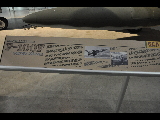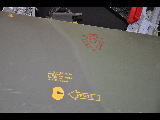|
North American F-100F (56-3837) Super Sabre Walk Around Page 1

Any questions, comments, or problems, please
email me.
These pictures were taken and shared with the web by
Weichao Chen
.
After the single-seat, supersonic F-100 fighter entered service in 1954, it developed a high accident rate, in part due to pilot inexperience with the Super Sabre. In response North American built a two-seat training version -- the F-100F -- to train new Super Sabre pilots.
The F-100F retained the basic combat capabilities of the F-100D, including six wing hardpoints to carry external stores, but reduced the number of 20mm cannon from four to two. North American delivered the last of 339 F-100Fs in 1959.
When F-100 units deployed to Southeast Asia, they included a mix of one- and two-seat F-100s, and both types participated in traditional bombing missions in support of ground forces. As tactics developed, the two-seat F-100F became an important aircraft for two new missions -- surface to air missile (SAM) suppression, known as Iron Hand, and high-speed forward air control (FAC), known as Misty FAC.
The aircraft on display, F-100F (s/n 56-3837), was a Misty FAC aircraft assigned to the 37th Tactical Fighter Wing at Phu Cat Air Base, Vietnam. It was flown in combat by several notable USAF figures, including Gen. Merrill McPeak and Gen. Ronald Fogleman (former USAF chiefs of staff), and Col. Richard Rutan (the chief pilot of the first around-the-world unrefueled flight). Painted as it appeared in March 1968, this aircraft went on display in 2003.
Located at the National Museum of the Air Force, Wright Patterson AFB, OH.
- NMAF Fact Sheet




















|